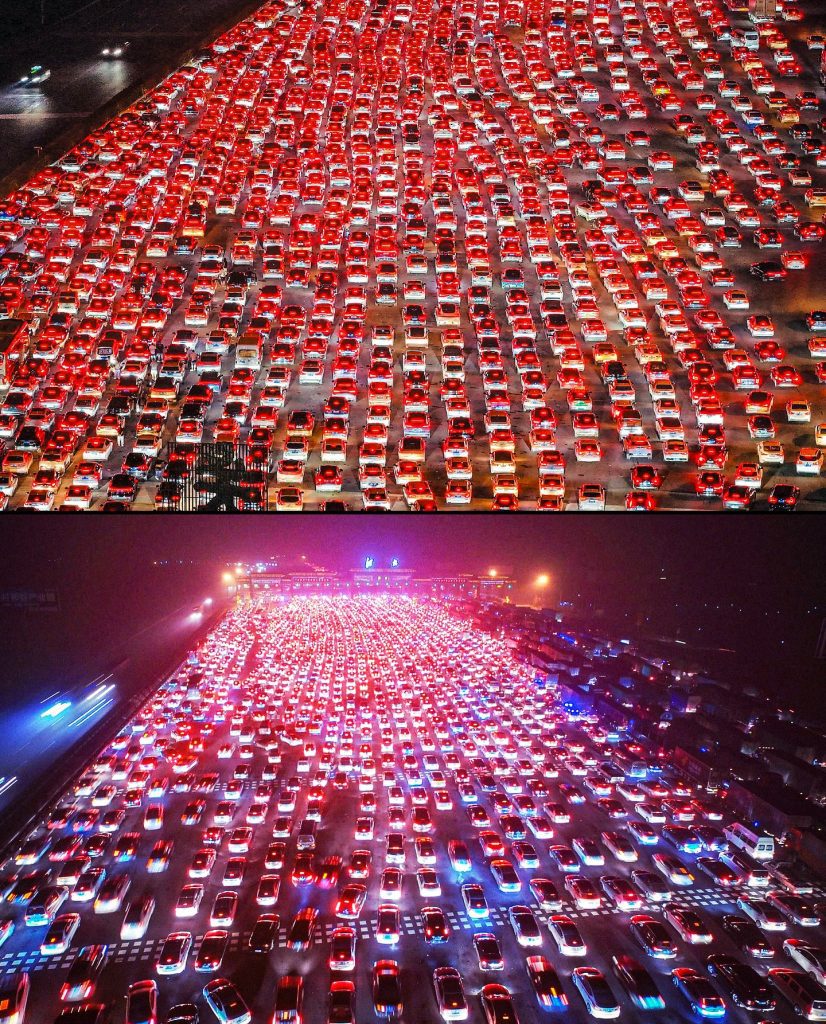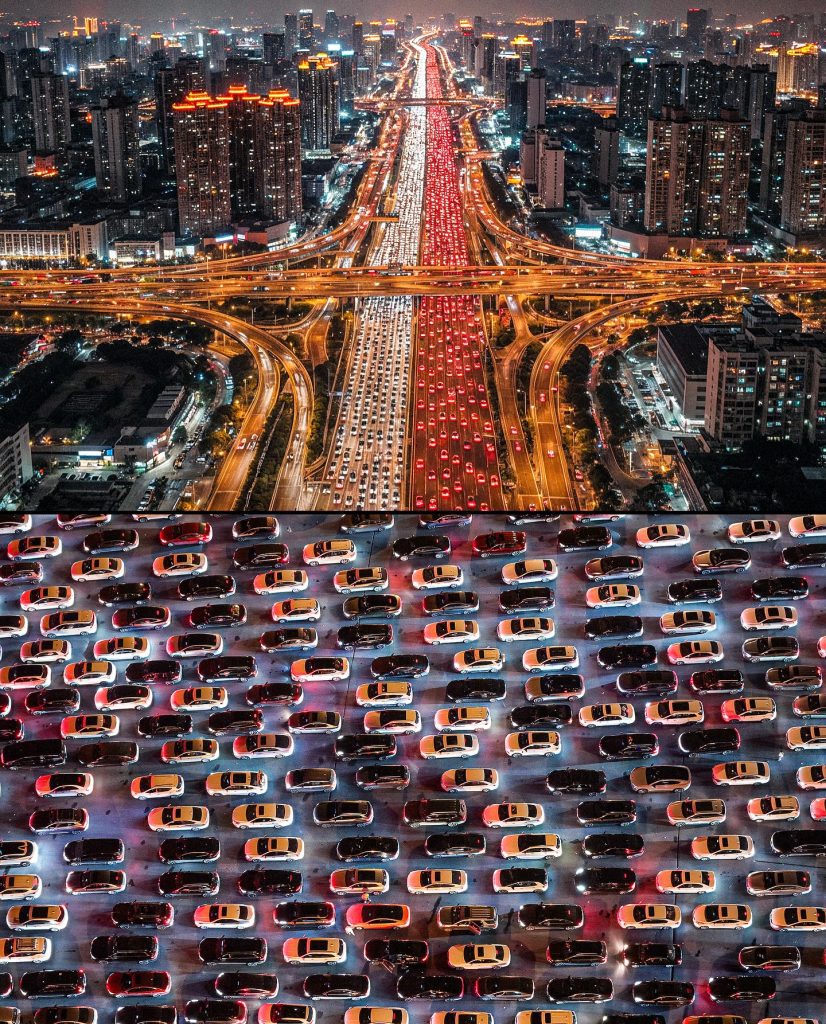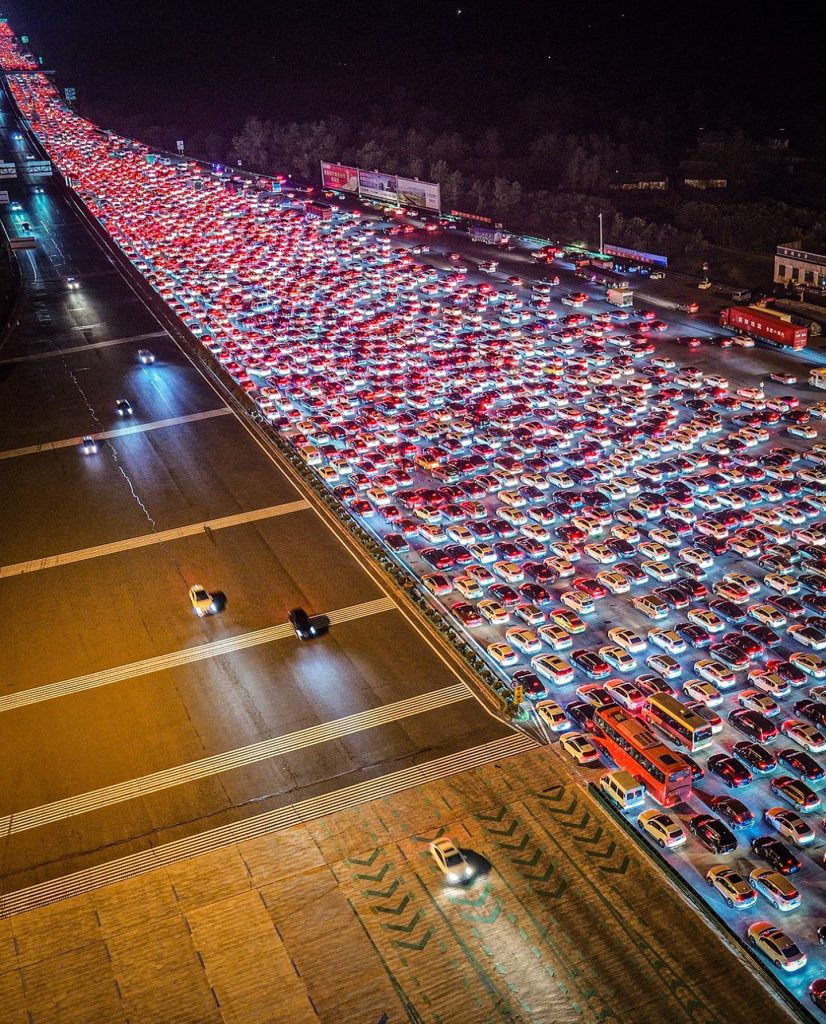This Is What Happens When Over a Billion People Hit the Road at Once in China
Every October, China witnesses one of the largest human migrations on Earth. It’s called the “Golden Week” — an eight-day national holiday when hundreds of millions of citizens take to the roads, rails, and skies to visit family, explore tourist destinations, or simply enjoy a rare stretch of vacation. What follows is an extraordinary sight that feels almost surreal: a traffic jam stretching for miles, glowing red under the brake lights of countless vehicles.

In 2025, the country recorded around 888 million domestic trips during the holiday — a number so staggering it’s nearly three times the population of the United States. Highways that are normally busy transform into motionless rivers of metal and light. From a distance, it looks beautiful — endless lines of cars shimmering under street lamps, red lights reflecting off the asphalt like molten lava. But for those behind the wheel, it’s a test of patience, endurance, and sometimes even luck.

One of the reasons traffic becomes so chaotic during Golden Week is the government’s decision to make expressways toll-free for small vehicles. What sounds like a generous gesture quickly turns into gridlock as millions of drivers flood the highways, all heading for the same exits and service stations. China’s expressway network spans an incredible 191,000 kilometers, making it one of the largest in the world. Yet even that vast infrastructure bends under the weight of national travel fever.

Photos taken from above during this time are mesmerizing — lanes filled edge to edge with cars, each glowing red, merging into what looks like a vast, living organism of light. It’s not just a traffic jam; it’s a phenomenon, a reflection of how deeply connected families are across a country so large and populous. Despite the frustrations, there’s something poetic about millions of people moving with the same goal — to be with loved ones.

For many drivers, a trip that would normally take a few hours can stretch into half a day or more. Toll booths become choke points, gas stations overflow, and highways resemble parking lots. Yet, somehow, the mood often stays calm. Travelers snack, talk, and sometimes even step out of their vehicles to stretch, creating a temporary community of strangers united by circumstance.
It’s a sight few countries can truly comprehend. Imagine every Thanksgiving road trip in the United States happening simultaneously on the same few highways. Multiply that by four, and you begin to understand the scale. It’s not chaos so much as a dance — one that’s both frustrating and awe-inspiring.
China’s massive population has long been a topic of fascination, and moments like this make the numbers feel tangible. Each car represents a story — a family heading home, a couple taking their first vacation, or a worker finally getting a break from city life. Beneath the sea of red taillights lies the heartbeat of a nation constantly on the move.
Over the years, authorities have tried to manage the congestion through improved infrastructure, real-time travel apps, and traffic predictions. Still, as long as there’s a free highway and a rare chance to rest, millions will take to the road. The images that come out of these journeys capture more than just congestion; they capture humanity — restless, determined, and always reaching for connection, no matter how long the road ahead may be.

